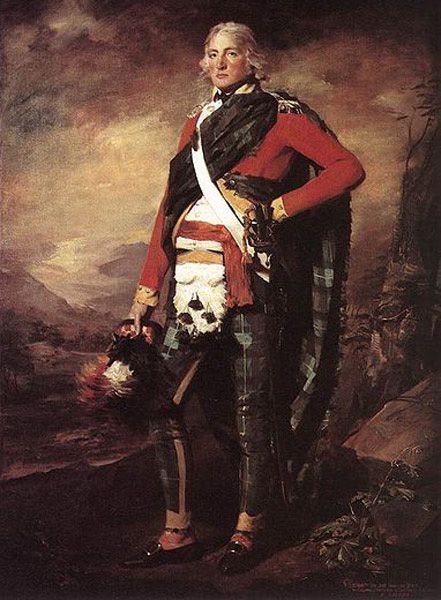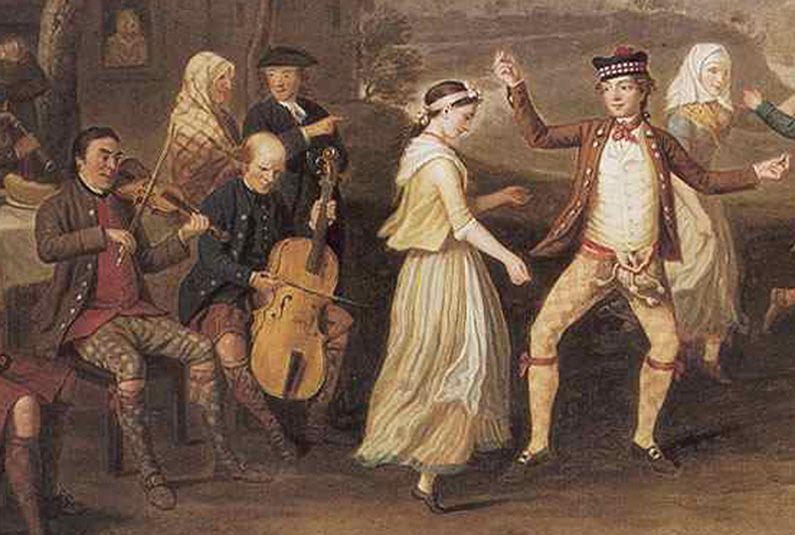|
-
20th March 09, 10:20 AM
#11
 Originally Posted by RadioKen

Great images, Puffer, thanks! Looking at the red jacket that the younger fellow is wearing I would put them at some time in the 18th century (though I'm not good enough yet to guess early, middle or late). Do you know if that's right?
Anybody know of a pattern or construction details for something like this? And, Puffer, what about those other, "under-trews" that you're having made up; any pattern or documentation for those? I'd be keen to try to make something up like that for next winter.
Thanks!
~Ken
The dating of these images (as to the attire ) is ??? These are 19th cent."artist "renditions" & therefor IMHO, highly "suspect" as to being "totally accurate" But, IMHO they due "reflect" the "LOOK". Even though they are done by "artists",these would be "more "accurate" ( esp. the 2nd one.)


Some additional notes
1.This attire was basically wore by men of "means" The "common man" was lucky to have hose & DEFIANTLY did not have Trews. ( the VAST majority, were bare legged & bare foot. even in the 1800s.
2. Trews (tois ) were a part of the "highland" wear from early on. ( interesting side notes.
A. from 1600 (maybe earlier ) they were worn by "gents" while on horseback. Often they had leather "inserts" sim to "cav attire" & were worn with boots.
B. Trews wre a part of the 1746 "BAN" as was the Kilt, Bag Pipes, etc
As to a pattern of the ones being made for me. They "resemble" "leggings" with "feet" They lady making these is sending me "documentation" sketches & pix. BUT it may be a while before I get them. She is now involved in doing several items for a MUSEUM. I will forward them when they arrive.
Puffer
-
-
20th March 09, 11:53 AM
#12
 Originally Posted by wvpiper

The images are from RR McIan - http://www.rrmcian.com/pages/index.htm
In one of the books that I've read-maybe the History of the Scottish People, the author states that those who could afford trews wore them.
Take it for what it's worth........one certainly wouldn't want to spend too much time on a horse wearing a kilt, me thinks
Thank you, I lost this site, so I could not cite the source.
Puffer
-
-
5th April 09, 10:02 AM
#13
I find that second painting to be fascinating Puffer. Look at the woman behind the cello player. I swear she's wearing a green Dress Milne tartan. Compare it with this dancer (3rd in from the right).
http://www.dance.net/topic/5007420/1...html&replies=9
-
-
5th April 09, 11:42 AM
#14
 Originally Posted by puffer

The dating of these images (as to the attire ) is ??? These are 19th cent."artist "renditions" & therefor IMHO, highly "suspect" as to being "totally accurate" But, IMHO they due "reflect" the "LOOK". Even though they are done by "artists",these would be "more "accurate" ( esp. the 2nd one.)


Puffer
Maybe I misunderstood you-but the Highland Wedding at Blair Atholl was done in 1780, by David Allan, not in the 1800s. The violin player, Neil Gow was a friend of the artist, and was paid to play by the Duke of Atholl
The portrait of Sir John Sinclair , by Sir Henry Raeburn, was also done in the late 18th century.
Raeburn also painted Neil Gow, in trews, or knee breeches, in 1787

In any event, I don't view them as 'artists' renditions', I think they're true to the times
-
-
9th April 09, 09:11 AM
#15
Highland dress? I thought trews were considered Lowland dress.
-
-
9th April 09, 09:38 AM
#16
 Originally Posted by Colonel MacNeal

Highland dress? I thought trews were considered Lowland dress.
No, they were the dress of the Highland gentry before the Lowland regiments of the British Army started to wear them.
T.
-
-
9th April 09, 01:57 PM
#17
I like them real tight stretchy kind - my uncle used to wear something like that, except his had two buttons and a flap in the back. 
-
-
11th May 09, 08:56 AM
#18
As a Highland reenactor, I have a set of truibhis - they are correctly tight on the legs and "low-hinged on the ****," as Martin Martin of Skye described them in 1707. Whereas 17th/18th c. knee-breeches have tight-fitting legs and a baggy seat (to allow one to sit without putting undue strain on the crotch seams), these truibhis have no such baggy seat, which makes sitting an adventure. I can also attest that truibhis also MUST be gartered at the knees (the MacIan prints notwithstanding) to keep the weight of the lower leg fabric from dragging down the upper part. Usually, after donning my truibhis, I pull up the fabric of the lower leg as much as possible and garter it immediately - his not only relieves the weight dragging down the upper part (knees and up), but also provides a little looseness around the knees that make walking comfortable. I hold my tuibhis up with a waistbelt, on which I also hang my sporran and dirk. My tuibhis don't have the little cloth flap (purpose??) in front. Very warm in cold/wet weather. After researching the wear of truibhis, I have come to the conclusion that they were an expensive item of dress (being tailored) which the lower socio-economic levels of clansmen probably could not afford. However, that did not preclude truibhis from being worn by any man who could somehow acquire a set through raid, trade or whatever. Period drawings show clansmen wearing truibhis with belted plaids. Good sources for information are Telfer Dunbar's two books, "A History of Highland Dress" and "The Costume of Scotland"
-
Similar Threads
-
By Coemgen in forum How to Accessorize your Kilt
Replies: 18
Last Post: 9th January 09, 10:22 AM
-
By Phogfan86 in forum General Kilt Talk
Replies: 17
Last Post: 7th November 08, 04:54 AM
-
By Granty666 in forum General Kilt Talk
Replies: 31
Last Post: 25th February 07, 04:02 PM
-
By caig in forum Kilt Advice
Replies: 0
Last Post: 13th October 04, 02:05 PM
-
By wolfgang in forum General Kilt Talk
Replies: 7
Last Post: 18th July 04, 10:46 AM
Tags for this Thread
 Posting Permissions
Posting Permissions
- You may not post new threads
- You may not post replies
- You may not post attachments
- You may not edit your posts
-
Forum Rules
|
|























Bookmarks